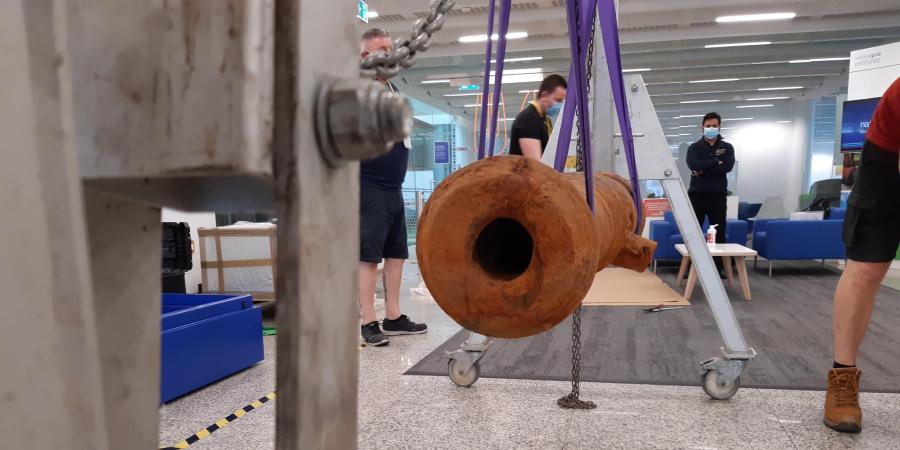On the 17th July 2021, four years after its recovery from the seabed at the entrance of Pegwell Bay off the Kent coast, a 300-year-old fully conserved cast iron cannon was delivered to the National Grid Offices in Solihull for display within a bespoke case constructed by Armour Systems Ltd.
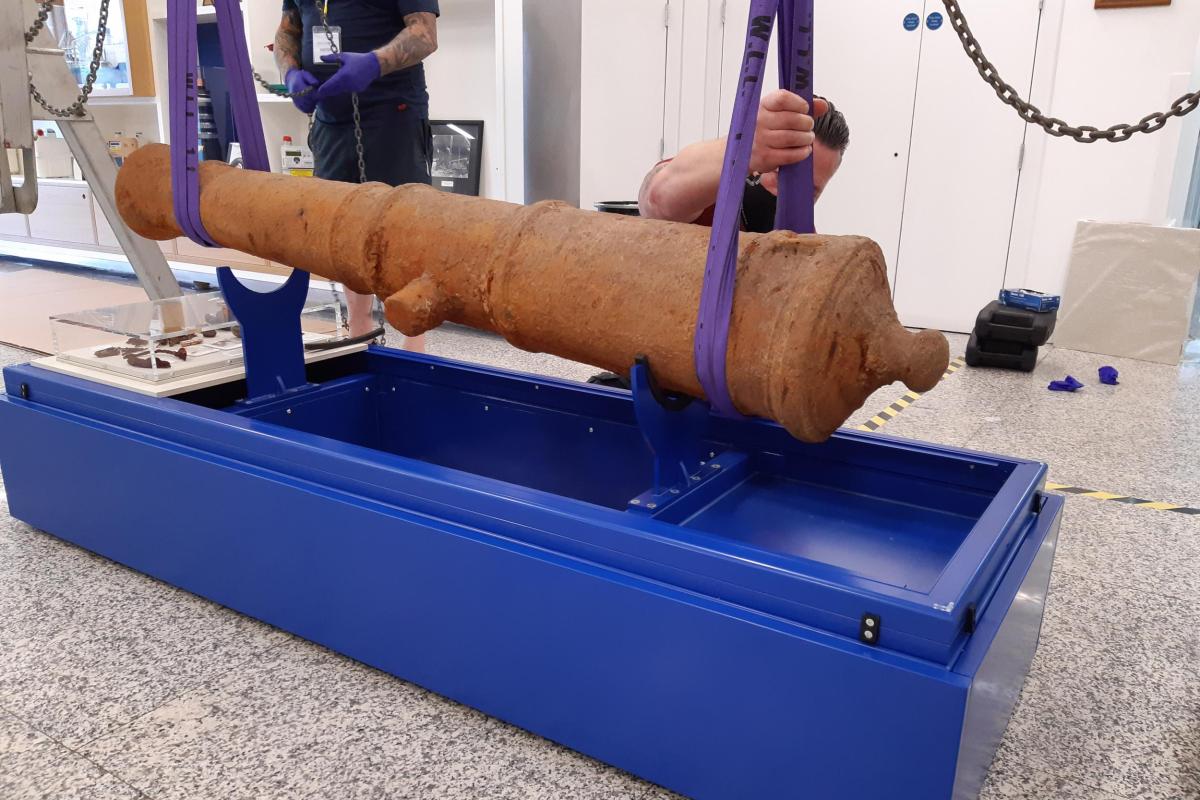
Above: lowering the cannon into place in its custom display case
The heavily concreted cannon was discovered on the seabed within the cable corridor for the high-voltage, direct current (HVDC) electrical cables of Nemo Link, the first Interconnector between Great Britain and Belgium. Nemo Link Limited is a joint venture between National Grid Interconnector Holdings Limited, a subsidiary company of the UK’s National Grid Plc, and the Belgian Elia group. The Nemo Link Interconnector will provide both countries with improved grid reliability and access to sustainable power generation.
Initially identified as a magnetic anomaly following Wessex Archaeology’s geophysical survey of the cable route, the site was later inspected using a Remotely Operated Vehicle that confirmed it to be a heavily concreted cannon. Following its recovery, members of Wessex Archaeology’s conservation and Coastal and Marine teams carefully removed the layers of concretion to reveal not only the cannon beneath but also several associated artefacts. A lead apron was still held in place over the touch hole using retaining cords, and a wooden tampion and fragments from a possible leather charge bag were discovered in the bore - all of which give clues to the cannon’s history, and that it was still in use when lost rather than it having been redundant and part of a ship’s ballast or discarded as no longer usable.
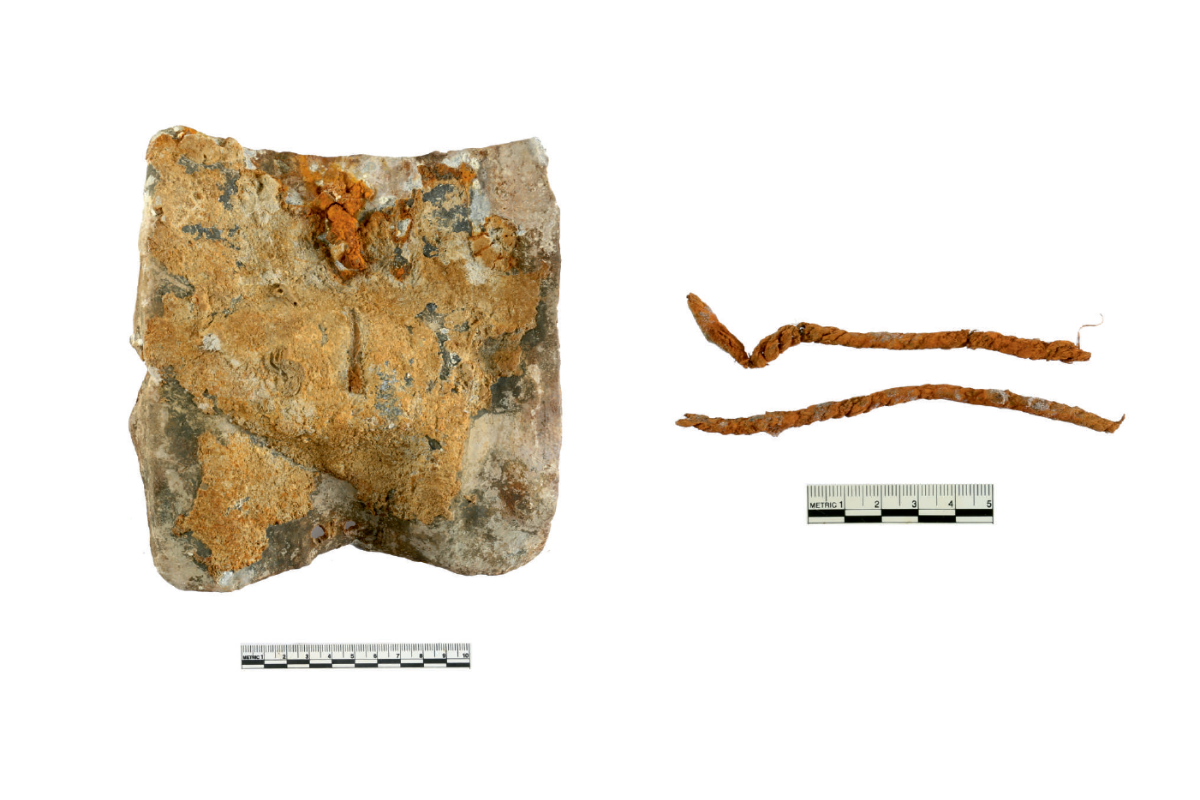
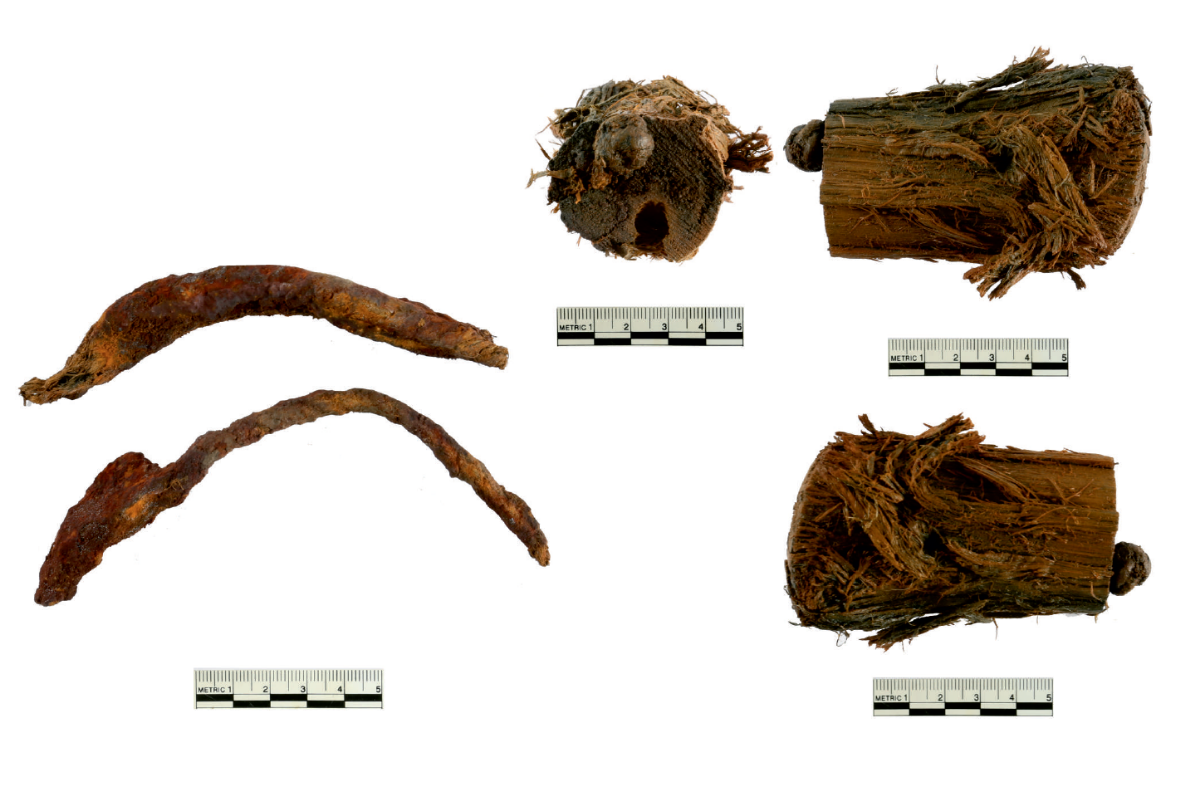
Left: the lead apron and retaining cords recovered attached to the cannon
Right: the wooden tampion and muzzle cord found in the cannon's bore hole
The cannon’s tampion, the wooden stopper used to seal the muzzle of the gun barrel, was found wedged in the bore, implying it may have been loaded at the time of its loss. Examination by unexploded ordnance specialists, Ramora UK, including attempts to x-ray it, fortunately revealed that this was not the case! The remnants of the charge bag may indicate the gun was loaded as a signal gun, but unfortunately, we will never know, as currently we have not found any documentary evidence to explain its loss.
The removal of the concretion was the first stage of the gun’s conservation, with it spending many months stored in a tank containing water and sodium sesquicarbonate to leach out the salts from the metal and prevent rusting. Once desalinated, it was carefully dried in a controlled manner for eventual display in a climate-controlled case. All the associated artefacts recovered with the cannon also required desalination in water to remove the damaging salts, followed by careful drying and stabilisation. The wood and organic items were further treated with varying strengths of PEG solutions prior to their being freeze dried.
Research undertaken by Senior Marine Archaeologist Paolo Croce using the dimensions and proportions of the cannon suggest it was a 3-pounder gun, cast to the ‘Borgard pattern’. This would date its casting to between 1715 and 1727, following the Board of Ordnance’s acceptance of his new system of artillery classification by weight, and the demise of the traditional naming of cannons. Guns of this size were often used for defence by merchant ships, with the guns being hired, borrowed, or sometimes purchased, for the duration of the voyage. The guns would then be stored ashore when not in use. Unlike naval vessels with their large crews to man the weapons, the later less heavily armed merchantmen with their smaller guns (such as this one) and smaller crews, would have been looking to escape from any attack rather than fight and risk being boarded. This, however, did not mean the crews, and passengers, were not regularly drilled in their use.
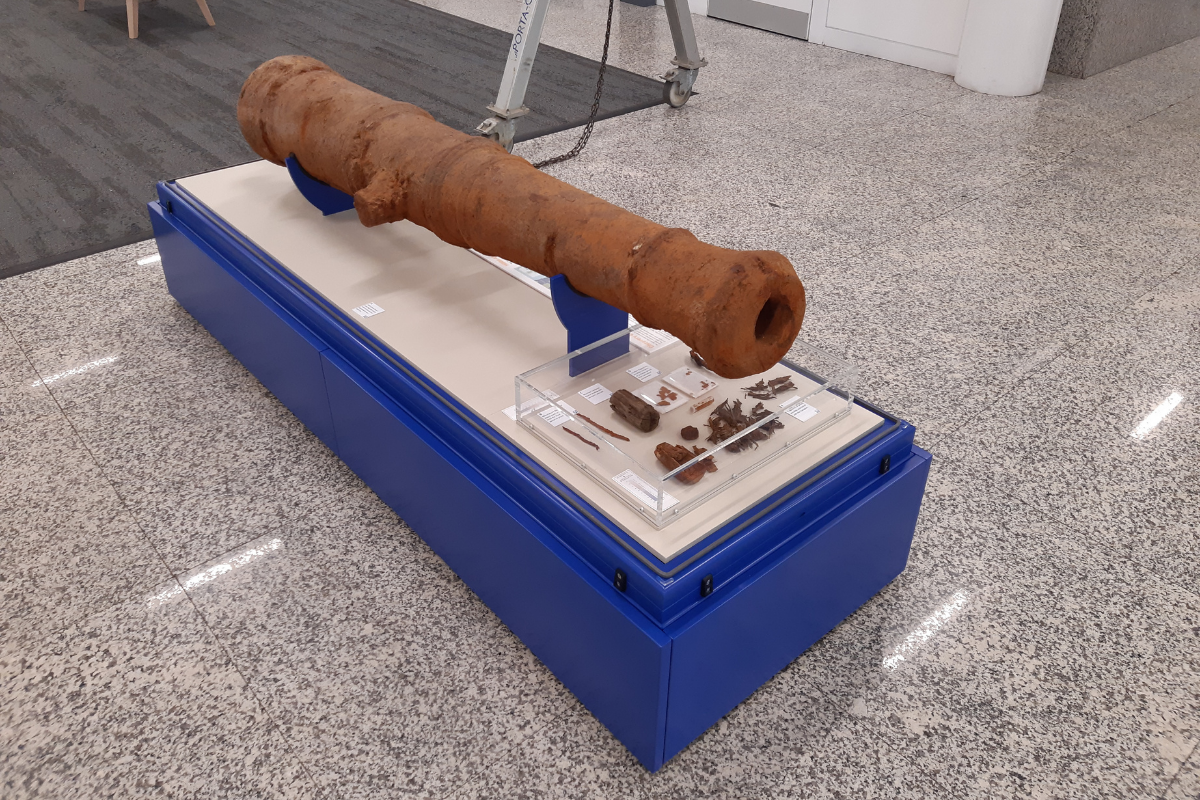
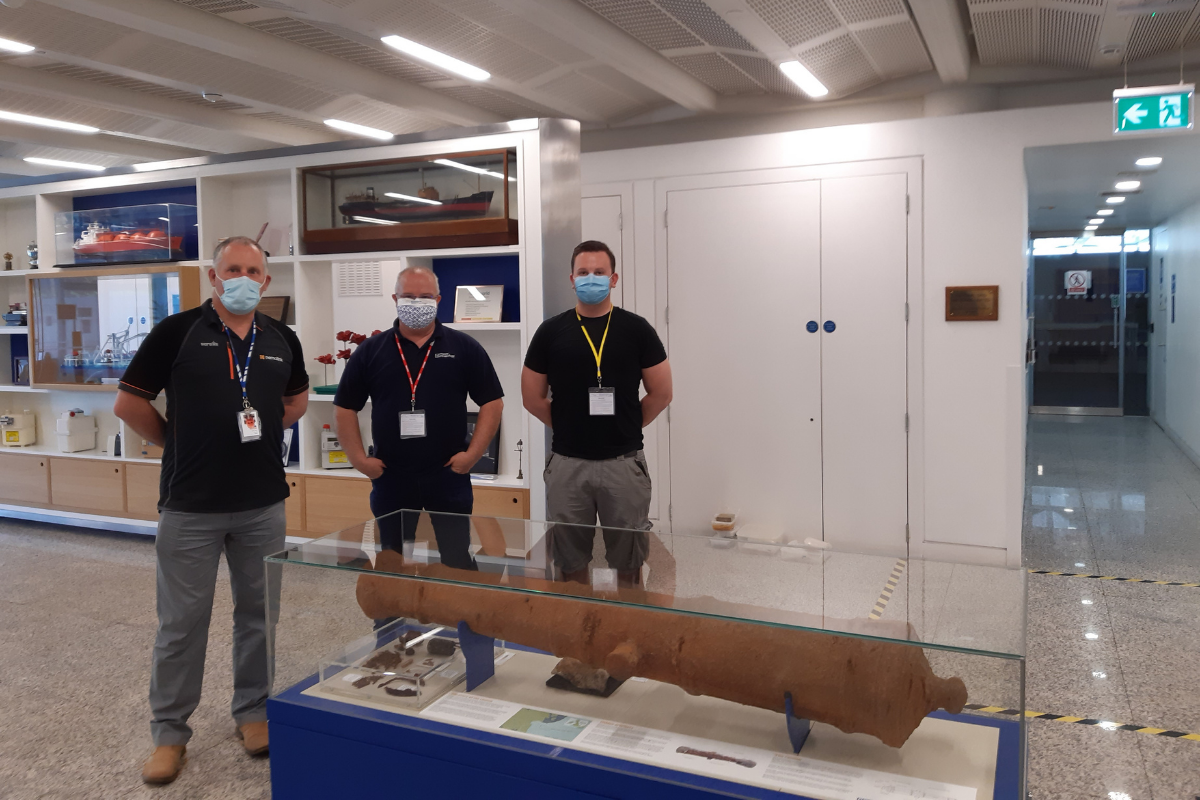
Left: the cannon, installed in its case with accompanying artefacts
Right: staff from Nemo Link, Wessex Archaeology and Armour Systems oversaw the installation
The installation of the cannon in its custom-built display case marks the final step in the process of its recovery and conservation, and will enable many more people to learn about this artefact and its interesting history.
As Andrew Gascoigne, Managing Director of Armour Systems, says, "Salvaging and restoring an 18th century cannon from the seabed is one thing, but subsequently handling and displaying it is another. Together with Wessex Archaeology, Armour Systems were able to do both, thanks to great teamwork."
Nigel Wood, Head of Operations and Maintenance at National Grid Interconnectors, says “We are excited to showcase this piece of history while continuing to play our part in accelerating to a clean energy future. Massive thanks to Wessex Archaeology and Armour Systems for your amazing work on this project to recover and preserve this interesting discovery. Perhaps in 300 years a part of Nemo Link, our interconnector will also be proudly on display explaining how it enabled the sharing of renewable energy across Europe?”
By Alistair Byford-Bates, Senior Marine Archaeologist
